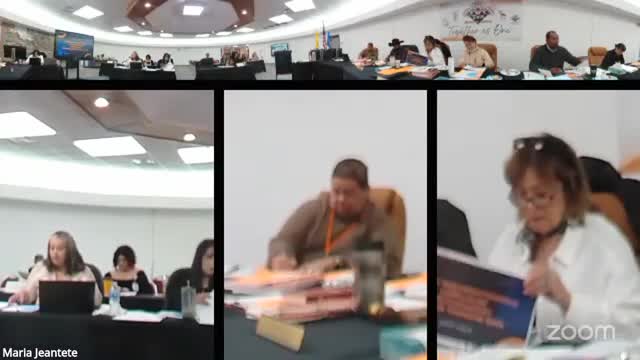Transportation Funding Formula Changes Impact Rural Districts Amid Increased Volatility
March 08, 2025 | TAOS MUNICIPAL SCHOOLS, School Districts, New Mexico
This article was created by AI summarizing key points discussed. AI makes mistakes, so for full details and context, please refer to the video of the full meeting. Please report any errors so we can fix them. Report an error »

In a recent Finance Committee meeting held by Taos Municipal Schools, critical discussions unfolded regarding the transportation funding formula that has left many districts grappling with financial volatility. The atmosphere was charged with concern as committee members reviewed a detailed progress report from the Legislative Finance Committee (LFC), which highlighted significant changes to the funding structure.
The report revealed that recent modifications to the transportation funding formula have disproportionately benefited districts with higher student density, while rural districts, like Taos, have faced funding cuts. This shift has created a precarious situation, with Taos Municipal Schools potentially facing another financial hit in the upcoming fiscal year. The committee expressed hope that legislative changes might revert to the previous formula, but indications suggest that this may not happen.
One of the key points raised was the establishment of a Transportation Emergency Fund, which has grown to $9 million. However, accessing these funds has proven challenging, as the Public Education Department (PED) has been reluctant to distribute them. The committee acknowledged the need for a thorough review of their transportation routes and operational efficiency to justify their funding requests.
The LFC's recommendations included the establishment of efficiency benchmarks for transportation funding, which could help stabilize allocations and reduce volatility. The committee emphasized the importance of understanding the funding formula, which has become increasingly complex and difficult to navigate. They noted that while transportation funding has increased by 38% since fiscal year 2018, ridership has decreased by 24%, complicating budgeting efforts.
As the meeting concluded, the committee recognized the pressing need to adapt to changing demographics and declining student populations. With a 17% annual turnover rate for bus drivers and rising operational costs, the challenges ahead are significant. The committee's commitment to addressing these issues reflects a broader concern for the sustainability of transportation services in New Mexico's schools, leaving many to wonder how these changes will impact students and families in the coming years.
The report revealed that recent modifications to the transportation funding formula have disproportionately benefited districts with higher student density, while rural districts, like Taos, have faced funding cuts. This shift has created a precarious situation, with Taos Municipal Schools potentially facing another financial hit in the upcoming fiscal year. The committee expressed hope that legislative changes might revert to the previous formula, but indications suggest that this may not happen.
One of the key points raised was the establishment of a Transportation Emergency Fund, which has grown to $9 million. However, accessing these funds has proven challenging, as the Public Education Department (PED) has been reluctant to distribute them. The committee acknowledged the need for a thorough review of their transportation routes and operational efficiency to justify their funding requests.
The LFC's recommendations included the establishment of efficiency benchmarks for transportation funding, which could help stabilize allocations and reduce volatility. The committee emphasized the importance of understanding the funding formula, which has become increasingly complex and difficult to navigate. They noted that while transportation funding has increased by 38% since fiscal year 2018, ridership has decreased by 24%, complicating budgeting efforts.
As the meeting concluded, the committee recognized the pressing need to adapt to changing demographics and declining student populations. With a 17% annual turnover rate for bus drivers and rising operational costs, the challenges ahead are significant. The committee's commitment to addressing these issues reflects a broader concern for the sustainability of transportation services in New Mexico's schools, leaving many to wonder how these changes will impact students and families in the coming years.
View full meeting
This article is based on a recent meeting—watch the full video and explore the complete transcript for deeper insights into the discussion.
View full meeting
